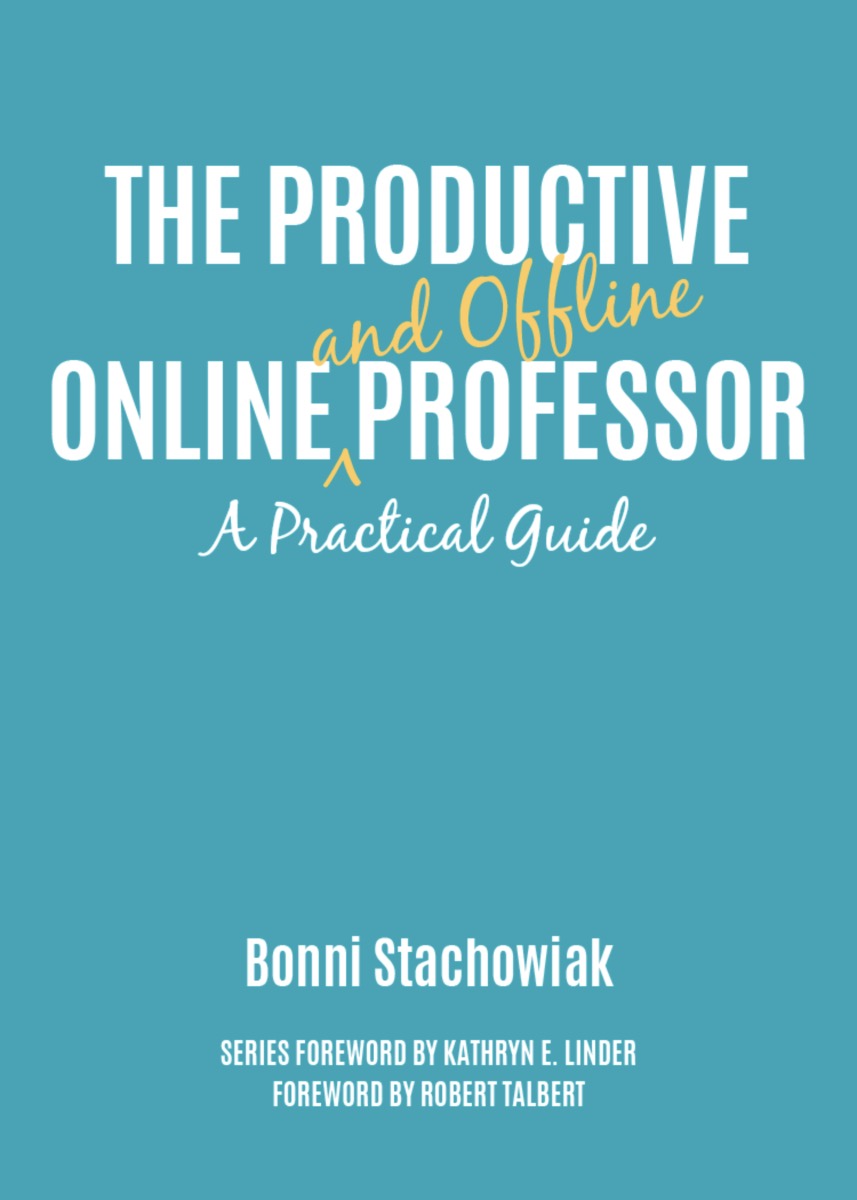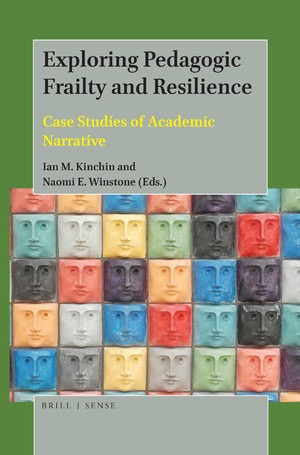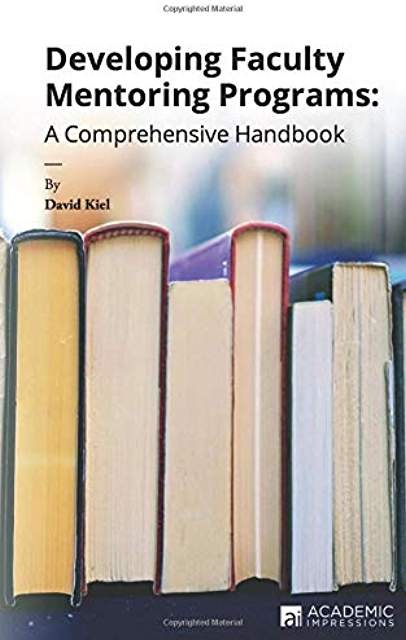professional development
Select an item by clicking its checkbox
Date Reviewed: June 22, 2021
Higher education instructors will find this guide helps them to fulfill their teaching roles with excellence and to build engaging relationships with students while also successfully managing other priorities in their professional and personal lives.
The Productive Online Professor assists those who teach online and blended courses with managing their personal productivity. Faculty are often expected to provide support and feedback to learners outside of normal work hours in non-traditional classes. Programs that are designed with more asynchronous content may cause faculty to perceive that it is difficult to ever press the “off button” on their teaching.The author offers guidance and suggests software tools for streamlining communication and productivity that enable faculty to better balance their lives while giving rich feedback to students.
Part 1 addresses the challenges in defining productivity and presents a working definition for the text.
Part 2 describes the ability to communicate using both synchronous and asynchronous methods, along with ways of enriching such communication.
Part 3 describes methods for finding, curating, and sharing relevant knowledge both within one’s courses and to a broader personal learning network (PLN).
Part 4 examines specific tools for navigating the unique challenges of productivity while teaching online. It includes ways to grade more productively while still providing rich feedback to students.
Part 5 shares techniques for keeping one’s course materials current and relevant in the most efficient ways possible.
The Productive Online Professor is a practical guide for how to provide high quality online classes to diverse students. This book shares specific technology and other tools that may be used in charting a course toward greater productivity. It is intended to be a professional resource for fulfilling our roles with excellence and joy, while managing other priorities in our personal and professional lives.(From the Publisher)
Date Reviewed: June 21, 2021
Chapters are written by academic leaders – colleagues who are recognised as excellent teachers within their disciplines and whose voices will be acknowledged as offering authentic commentary on the current state of university teaching. These commentaries offer a unique resource for other academics who may be tempted to reflect on their teaching in a scholarly manner, or to university managers and academic developers who want to explore the detail that lies beneath broad surveys of teaching quality and investigate the factors that can either support the development of teaching or impede its progress.
This collection of narratives drawn from a single institution will resonate with the experiences of teachers in higher education more broadly through areas of common interest and regions of generalisability that can be explored to inform professional development of university teachers in other institutional and national contexts. (From the Publisher)
Date Reviewed: June 17, 2021

To Improve the Academy: Resources for Faculty, Instructional, and Organizational Development, Volume 31
Date Reviewed: April 8, 2015
This volume of twenty-one essays comes from the Professional and Organizational Development Network in Higher Education (POD) and is directed to faculty and institutional development staff, department chairs, faculty, deans, student services staff, chief academic officers, and educational consultants. Commensurate with their agenda to facilitate creative exploration, the essays are organized after they are collected, and arranged loosely by topic with about three essays per topic. The topics include developing new paradigms for faculty and professional development, tailoring faculty development to diverse audiences and partners, refining faculty development programs for maximum impact, reflecting on and advancing what developers do, responding to different graduate teaching assistants’ needs, enhancing student learning, and advancing new pedagogical concepts. The essays are written by educators and developers throughout the POD network and undergo a double-blind peer review system. As such, they do not deal with classroom teaching and application per se, but with ways to motivate, involve, measure, and prioritize self-reflective and critical development among educators.
Several essays are of particular interest because they propose responses to changes emerging in higher education. Drawing on research into video games and their ability to attract and retain learners, for example, an essay by Kevin Yee encourages educators to apply game theory principles to course design (335-348). Even when instructors might not have the technical savvy to generate their own video game, they can apply the principles of successful gaming with low-tech options in their course design. For example, instructors might design learning opportunities that are narratives (such as a case study or an urgent problem that needs to be solved), have calibrated difficulty and rapid feedback response (such as online quizzes that can be taken until they reach 100 percent), employ diversions (such as add-on TED talks), and generate competition.
Another essay, by Al Rudnitsky et al., describes a college-wide multiyear professional development effort that addressed the need for instructors to adapt their expertise to changing needs of students (127-143). It examines how instructors at Smith College formed a process-oriented (rather than skill-based approach) faculty learning community that explored recent research on how people learn, applying it both in their classrooms and in their learning community. They applied such principles as these: ultimately learning depends on what learners do, not what teachers do; existing knowledge has a profound effect on learners’ current thinking and learning; effective learners are metacognitive in that they set goals, self-monitor, and self-regulate; and learning is socially situated and mediated; the instructor’s task is to design complex learning environments and motivate students through evaluation. They contend, “understanding and deep learning that allow for better knowledge transfer and preparation for future learning are privileged educational outcomes” (133). The goal of the process, they found, was to build knowledge through discourse, idea improvement, and collective cognitive responsibility (135).
In a third essay worth noting, Michael J. Zeig and Roger G. Baldwin describe concrete recommendations to help senior faculty (sixty-plus years, about 33 percent of professors in the U.S.) develop new meaning and purpose in this phase of their academic life. They suggest that senior faculty reflect on the priorities of their career and identify what resources they need, reconsider what success means in late career, seek out co-mentoring opportunities (in which younger faculty members share their expertise with their mentors, especially in technology), and plan their own professional development. Administrators, deans, and chairs need to see senior faculty members as individuals, maintain reasonable expectations, provide relevant development opportunities, and recognize and appreciate achievement (83-86).
This volume is a valuable resource, with a rich bounty of essays geared to building, sustaining, evaluating, and promoting faculty development programs.

To Improve the Academy: Resources for Faculty, Instructional, and Organizational Development, Volume 32
Date Reviewed: May 29, 2017
This volume of twenty-one essays comes from the Professional and Organizational Development Network in Higher Education (POD) and is directed to faculty and institutional development staff, department chairs, faculty, deans, student services staff, chief academic officers, and educational consultants. Commensurate with their agenda to facilitate creative exploration, the essays are organized after they are collected, and arranged loosely by topic with about three essays per topic. The topics include developing new paradigms for faculty and professional development, tailoring faculty development to diverse audiences and partners, refining faculty development programs for maximum impact, reflecting on and advancing what developers do, responding to different graduate teaching assistants’ needs, enhancing student learning, and advancing new pedagogical concepts. The essays are written by educators and developers throughout the POD network and undergo a double-blind peer review system. As such, they do not deal with classroom teaching and application per se, but with ways to motivate, involve, measure, and prioritize self-reflective and critical development among educators.
Several essays are of particular interest because they propose responses to changes emerging in higher education. Drawing on research into video games and their ability to attract and retain learners, for example, an essay by Kevin Yee encourages educators to apply game theory principles to course design (335-348). Even when instructors might not have the technical savvy to generate their own video game, they can apply the principles of successful gaming with low-tech options in their course design. For example, instructors might design learning opportunities that are narratives (such as a case study or an urgent problem that needs to be solved), have calibrated difficulty and rapid feedback response (such as online quizzes that can be taken until they reach 100 percent), employ diversions (such as add-on TED talks), and generate competition.
Another essay, by Al Rudnitsky et al., describes a college-wide multiyear professional development effort that addressed the need for instructors to adapt their expertise to changing needs of students (127-143). It examines how instructors at Smith College formed a process-oriented (rather than skill-based approach) faculty learning community that explored recent research on how people learn, applying it both in their classrooms and in their learning community. They applied such principles as these: ultimately learning depends on what learners do, not what teachers do; existing knowledge has a profound effect on learners’ current thinking and learning; effective learners are metacognitive in that they set goals, self-monitor, and self-regulate; and learning is socially situated and mediated; the instructor’s task is to design complex learning environments and motivate students through evaluation. They contend, “understanding and deep learning that allow for better knowledge transfer and preparation for future learning are privileged educational outcomes” (133). The goal of the process, they found, was to build knowledge through discourse, idea improvement, and collective cognitive responsibility (135).
In a third essay worth noting, Michael J. Zeig and Roger G. Baldwin describe concrete recommendations to help senior faculty (sixty-plus years, about 33 percent of professors in the U.S.) develop new meaning and purpose in this phase of their academic life. They suggest that senior faculty reflect on the priorities of their career and identify what resources they need, reconsider what success means in late career, seek out co-mentoring opportunities (in which younger faculty members share their expertise with their mentors, especially in technology), and plan their own professional development. Administrators, deans, and chairs need to see senior faculty members as individuals, maintain reasonable expectations, provide relevant development opportunities, and recognize and appreciate achievement (83-86).
This volume is a valuable resource, with a rich bounty of essays geared to building, sustaining, evaluating, and promoting faculty development programs.


